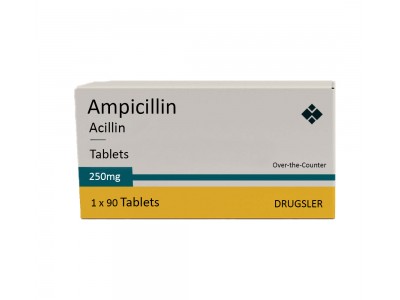Ampicillin, also known as Acillin, is a commonly prescribed antibiotic used to treat a variety of bacterial infections. While it can be highly effective, it’s important to be aware of the Ampicillin side effects that may occur. This article will explore these potential side effects, including allergic reactions, gastrointestinal issues, and more. Understanding the risks can help you manage any side effects and ensure the safe use of this medication.
What is Ampicillin (Acillin)?
Ampicillin, marketed under the brand name Acillin, is part of the penicillin class of antibiotics. It is used to treat a wide range of bacterial infections, including respiratory infections, urinary tract infections, and infections caused by susceptible bacteria. As with any medication, it’s essential to be aware of the possible side effects that might occur while taking Ampicillin.
Common Side Effects of Ampicillin
Like most medications, Ampicillin can cause a variety of side effects, some of which are more common than others. Some of the most frequently reported side effects include:
1. Ampicillin Allergic Reactions
One of the most concerning side effects of Ampicillin is an allergic reaction. Symptoms can range from mild to severe and may include hives, swelling, difficulty breathing, and severe dizziness. If you notice any of these symptoms, it is essential to seek immediate medical attention, as allergic reactions to Ampicillin can be life-threatening in rare cases.
2. Ampicillin Diarrhea
Ampicillin diarrhea is another common side effect. Many individuals taking Ampicillin experience loose stools or diarrhea. This occurs because antibiotics, including Ampicillin, can disrupt the natural balance of bacteria in the intestines. In most cases, the diarrhea is mild, but if it persists or is severe, it may be a sign of a more serious condition, such as Clostridium difficile (C. difficile) infection, and medical help should be sought.
3. Ampicillin Nausea
Feeling nauseous is another common side effect of Ampicillin. This can occur due to the medication's impact on the gastrointestinal system. Nausea may be accompanied by vomiting or a loss of appetite. To help minimize nausea, it’s recommended to take the medication with food, unless instructed otherwise by your doctor.
4. Ampicillin Rash
A rash is a common side effect of Ampicillin. It may appear as red, itchy patches on the skin and can occur within a few days of starting the medication. While most rashes are mild, a more severe rash or other signs of an allergic reaction should be taken seriously and evaluated by a healthcare professional.
Serious Side Effects of Ampicillin
In some cases, Ampicillin can cause more serious side effects. These are less common but should be monitored carefully:
5. Ampicillin Kidney Problems
While rare, Ampicillin can sometimes lead to kidney problems. Signs of kidney issues include swelling in the feet or ankles, decreased urine output, or dark-colored urine. If you experience any of these symptoms, it is essential to contact your healthcare provider immediately.
6. Ampicillin Dizziness
Dizziness is another potential side effect of Ampicillin. Some individuals may feel lightheaded or dizzy while taking the medication, especially if they stand up quickly. This side effect is typically mild but should be monitored, particularly if it leads to difficulty performing daily activities or if it is accompanied by other symptoms like fainting.
Drug Interactions with Ampicillin
Acillin drug interactions can also contribute to unwanted side effects. Ampicillin can interact with other medications, including blood thinners, oral contraceptives, and certain antifungals. These interactions may either decrease the effectiveness of Ampicillin or increase the risk of side effects. Always inform your healthcare provider about all the medications you are currently taking before starting Ampicillin.
Ampicillin Side Effects in Children
Children may experience similar side effects from Ampicillin as adults, but they can also be at higher risk for certain reactions. Parents should be especially vigilant for signs of Ampicillin side effects in children, including rash, diarrhea, or allergic reactions. If any concerning symptoms arise, it’s important to consult a healthcare provider promptly.
How to Manage Side Effects of Ampicillin
If you experience mild side effects, such as nausea or diarrhea, they often resolve on their own as your body adjusts to the medication. Drinking plenty of fluids, staying hydrated, and eating small meals can help manage symptoms. However, if you experience severe side effects or any signs of an allergic reaction, it’s crucial to stop taking Ampicillin and contact your healthcare provider immediately.
Conclusion
Ampicillin (Acillin) is a useful antibiotic for treating bacterial infections, but like all medications, it comes with potential side effects. By being aware of the common and serious side effects, you can take steps to minimize risks and seek prompt medical help when necessary. If you are prescribed Ampicillin, make sure to follow your doctor’s instructions carefully and inform them of any other medications you are taking to avoid potential drug interactions.

